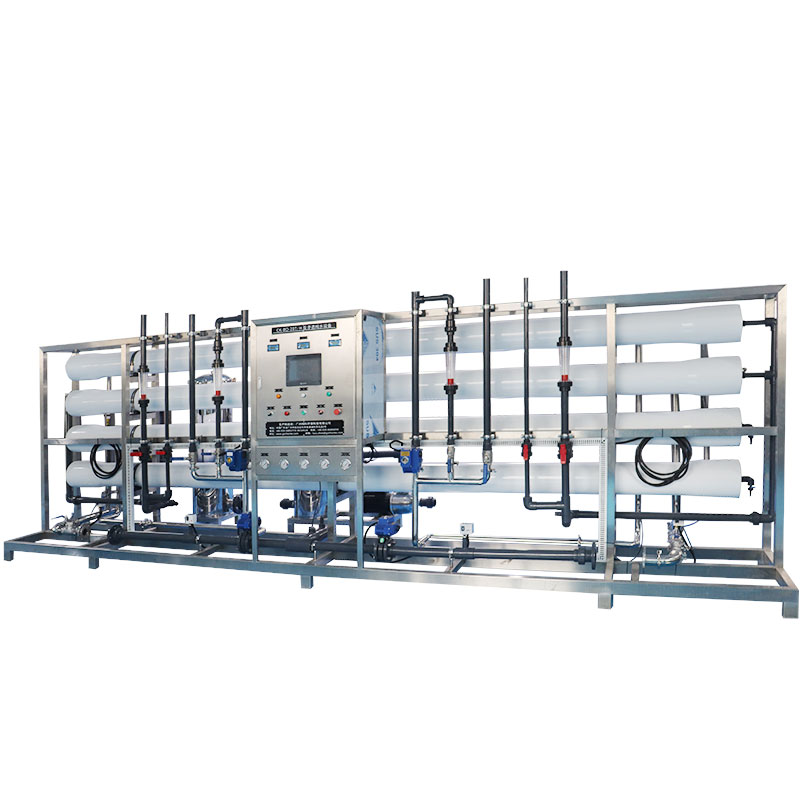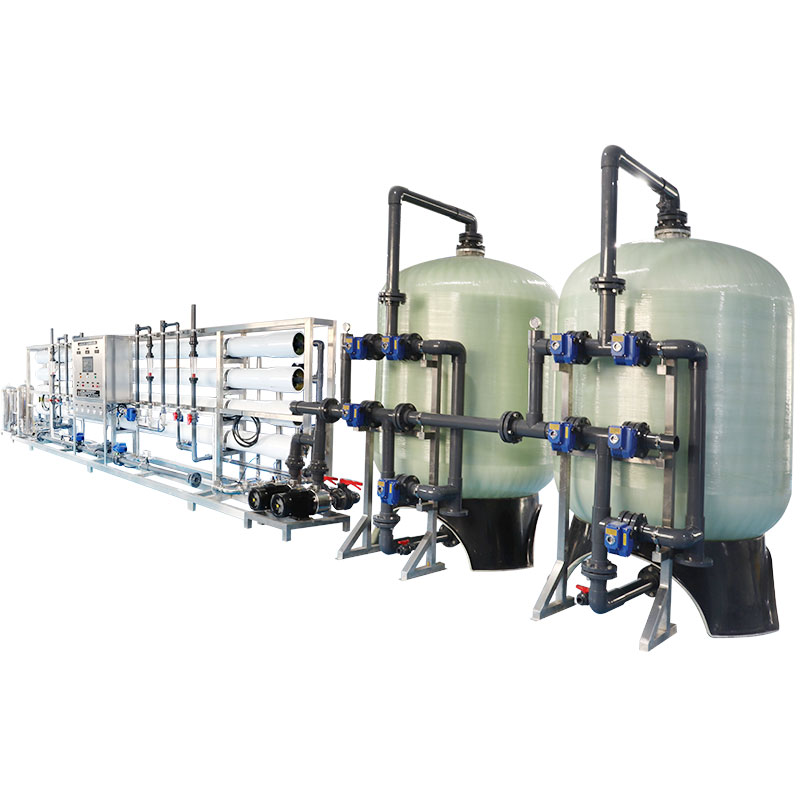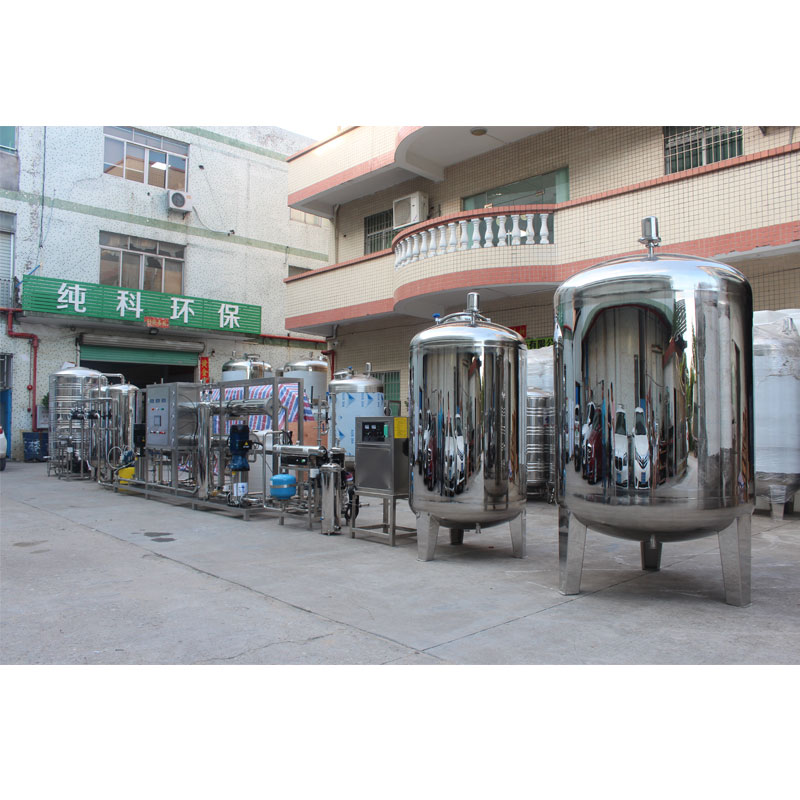Do American households reuse sewage? How is sewage recycled?
Amid the growing water pressure around the world, sewage recycling and reuse has become an important issue in many countries, including the United States. As a major resource-consuming country, the United States has developed rapidly in water resource management and sewage treatment technology, especially at the household level, where more and more households are beginning to explore and adopt sewage reuse to save water resources and reduce water costs.
So, do American households reuse sewage? What is the process of sewage recycling? What water treatment equipment is needed? This article will explore these issues in detail.

Do American households reuse sewage?
In the United States, although household sewage reuse is not yet popular, this trend is gradually emerging, especially in some states with relatively scarce water resources, such as California, Arizona, and Nevada. Household sewage reuse usually includes two aspects: treatment and reuse of gray water and black water.
What is gray water reuse?
Greywater refers to relatively clean wastewater in households, mainly from showers, bathtubs, wash basins, and washing machines. Greywater does not contain fecal matter, so it is relatively easy to treat and reuse. Many households in the United States have begun to reuse graywater for non-drinking purposes such as irrigating gardens and flushing toilets, thereby reducing the demand for tap water.
● Current regulations: In some states, local governments have issued relevant regulations and guidelines for graywater recycling and encourage residents to install graywater recycling systems. These regulations stipulate the treatment standards and scope of use of graywater to ensure that it does not pose a threat to the environment and public health.
● Popularity of use: Although graywater recycling systems are gradually becoming popular in some areas, there are still only a few households using graywater recycling systems nationwide. This is mainly related to public awareness, initial investment and the popularity of related technologies.

What is blackwater recycling?
Blackwater is sewage containing feces, urine and kitchen wastewater. Due to its complex composition and potential harm, the treatment and reuse of blackwater requires higher technical requirements. At present, household recycling of blackwater is relatively rare in the United States, and is usually concentrated in industrial-scale sewage treatment plants for centralized treatment. However, with the advancement of technology and the increase in water resource pressure, household treatment and reuse of blackwater may gradually be promoted in the future.
How is sewage recycled?
The process of wastewater recycling is usually divided into several key steps: wastewater collection, pretreatment, primary treatment, reuse and final disposal. The following is a detailed explanation of each step.
Wastewater Collection
Wastewater recycling first requires the collection of wastewater from various sources in the household. This usually requires the household to install a special wastewater collection pipe system to collect gray water and black water separately. Gray water can be directly fed into the treatment unit through a simple separation pipe system, while black water requires a more complex pipe system to avoid cross contamination.
Pretreatment
Before entering the primary treatment system, wastewater usually needs to be pretreated to remove large particles, grease and suspended matter. Pretreatment equipment usually includes filters, sedimentation tanks and oil-water separators. The main purpose of this stage is to reduce impurities in wastewater and reduce the difficulty and equipment load of subsequent treatment.
● Filters: used to remove large particles in wastewater, such as hair, paper scraps and food residues.
● Sedimentation tanks: purify wastewater by settling suspended matter through gravity.
● Oil-water separator: Especially when treating kitchen wastewater, the oil-water separator can effectively remove grease from the wastewater to prevent grease from entering the subsequent treatment equipment and causing blockage or equipment damage.
Main treatment
The main treatment of sewage is the core of the entire recycling process, and usually includes physical, chemical and biological treatment methods. Depending on the type of sewage (grey water or black water), the treatment method will vary.
● Physical treatment: Including filtration, centrifugal separation and other methods, mainly used to remove suspended solids and fine particles in sewage.
● Chemical treatment: By adding chemical agents such as chlorine, ozone, etc., disinfection and oxidation treatment are carried out to kill pathogenic microorganisms and degrade organic pollutants.
● Biological treatment: Using microorganisms to degrade organic matter in sewage is a key step in blackwater treatment. Common biological treatment methods include activated sludge method, anaerobic digestion and artificial wetlands.
In household greywater treatment systems, commonly used treatment equipment includes multi-stage filters, ultraviolet disinfectors and bioreactors. For blackwater treatment, due to its complexity, more advanced biological treatment systems are usually required, such as membrane bioreactors (MBRs), anaerobic reactors, etc.
Reuse
After primary treatment, wastewater can be reused, usually for non-potable purposes such as garden irrigation, toilet flushing, car washing, etc. To ensure the safety of reused water, households usually install water storage tanks and water supply pumps to distribute the treated water to various uses according to demand.
● Water storage tanks: used to store treated reused water to ensure stable water quality and balance water supply demand.
● Water supply pumps: transport reused water to various points of use in the household, such as irrigation systems, toilets, etc.
Final disposal
Although treated wastewater can be reused, there is still a part of residual material that needs to be disposed of, such as sediment, sludge and other non-degradable materials. Usually, these materials are regularly removed from the system and treated and disposed of through garbage disposal systems or centralized sewage treatment plants.

What water treatment equipment is needed?
The successful implementation of a domestic wastewater recycling system depends on several key equipment, each of which has different functions, from wastewater collection to treatment to reuse, to ensure the efficient operation of the entire system. The following are common types of equipment in wastewater recycling and their functions.
Filters
Filters are basic equipment in sewage treatment systems, mainly used to remove suspended solids and particulate matter in sewage. According to the stage and requirements of sewage treatment, filters can be divided into coarse filters, fine filters and ultrafilters, etc.
● Coarse filters: usually used in the pretreatment stage to remove large particles and impurities.
● Fine filters: used in the main treatment stage to further remove fine particles and suspended matter.
● Ultrafilter: a high-efficiency filter used to remove tiny particles and bacteria to ensure the cleanliness of water quality.
Biological treatment equipment
Biological treatment equipment is the core of sewage treatment systems, especially in black water treatment. Common biological treatment equipment includes activated sludge reactors, membrane bioreactors and anaerobic digesters, etc.
● Activated sludge reactor: using the metabolic action of microorganisms to degrade organic matter in sewage is a common method of sewage biological treatment.
● Membrane bioreactor (MBR): combining biological treatment with membrane filtration technology, it can efficiently remove organic matter and microorganisms in sewage.
● Anaerobic digester: used to treat high-concentration organic wastewater, and convert organic matter into biogas and sludge through the action of anaerobic microorganisms.
Disinfection equipment
In order to ensure the safety of reused water, disinfection equipment is crucial in the sewage treatment system. Common disinfection equipment includes ultraviolet disinfection equipment, ozone generators and chlorination devices.
● Ultraviolet disinfection equipment: Use ultraviolet radiation to destroy the DNA structure of microorganisms to achieve the purpose of disinfection.
● Ozone generator: Kill pathogenic microorganisms through the strong oxidizing property of ozone, and remove odors and organic pollutants in the water.
● Chlorination device: Disinfect water by adding chloride, which is one of the traditional disinfection methods.
Water storage equipment
The treated sewage usually needs to be stored for reuse. Water storage equipment includes water storage tanks and water distribution systems to ensure the stable supply and convenient use of reused water.
● Water storage tanks: Used to store treated reused water, usually choose water storage tanks of different capacities according to household water demand.
● Water distribution system: Includes water supply pumps and water distribution pipes to transport treated water to various household use points.





